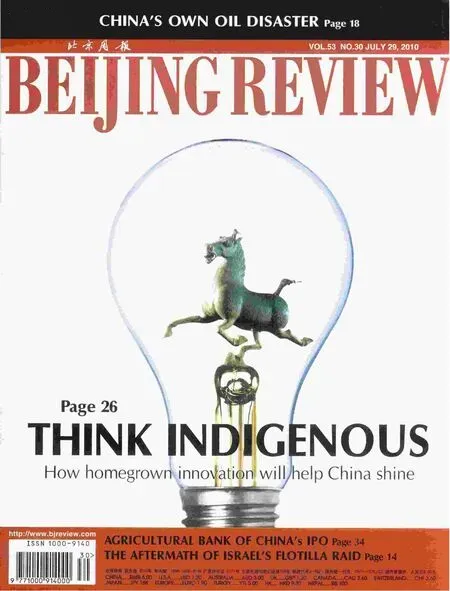The Fiction of Protectionism
2010-12-27ByYAOBIN
By YAO BIN
The Fiction of Protectionism
By YAO BIN
Because of its constant supplies of cheap consumer products to people around the world during the past 30 years, China has become known as the “world’s factory.”
But, behind this “glory” are tears and headaches because of excessive consumption of the country’s natural resources and environmental deterioration. Worse still, due to the lack of core technologies, Chinese manufacturers make only little money from contract manufacturing, while foreign patent and brand holders enjoy a fat paycheck. To change this embarrassing situation, the Chinese Government has made it top priority to enhance the country’s innovative capability so as to maintain a sustainable development of the economy.
In November 2009, the Chinese Government launched a program to accredit products with proprietary Chinese technologies and prioritize accredited products in government procurement. This effort to boost China’s indigenous innovation, however, was questioned by some foreign businesses operating in China. They said the regulation was “onerous and discriminatory,” which was against China’s commitments to shun protectionism. U.S. companies successfully lobbied their government to raise the issue at the China-U.S. Strategic and Economic Dialogue in May.
Every government has the incontrovertible right to decide the ways of spending taxpayers’ money. It is one of the world’s common practices to spend part of the money on domestically developed products and China is no exception. The Chinese policy is also fully consistent with the country’s Government Procurement Law.
More importantly, China’s policies to encourage indigenous innovation are not meant to drive away foreign companies because, still technologically underdeveloped, the country badly needs advanced know-how. For example, a recent UN report says China’s development of the low-carbon economy requires more than 60 core technologies, but it will be necessary to import 42.
Before the policy to favor domestic products in government procurement was unveiled last November, the Chinese Government had spelled out products developed in China, no matter if they are supported by foreign investment or not, should be regarded as domestic products. In April, the Ministry of Science and Technology issued a revised defnition of domestic products that included products developed by multinationals in China.
The Chinese hi-tech market is expected to grow 20-40 percent annually in the next 15 years. Instead of blaming China, technologyexporting nations should take more proactive steps on their part if they are seeking a greater presence in the Chinese market.
The United States, for example, saw its share of China’s hi-tech imports sliding from 18.3 percent in 2001 to 7 percent in 2008, due to self-imposed restrictions. Provided the restrictions were removed, total U.S. exports would have reached $60 billion for the year. In early May, U. S. Secretary of Commerce Gary Locke said restrictions on some hi-tech exports to China might soon be eased. This is an encouraging signal but substantial progress would be more signifcant.
